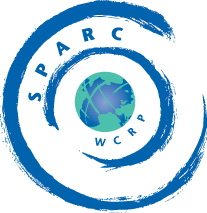Report on the Heraeus Seminar on Trends in the Upper Atmosphere
Kühlungsborn, Germany, 13-16 May, 2002
Franz-Josef Lübken, Universität Rostock, Germany (luebken@iap-kborn.de)
From May 13-16, 2002, a seminar on trends in the upper atmosphere took place at the Leibniz Institute of
Atmospheric Physics (IAP) in Kühlungsborn, Germany. The seminar was supported by the German private
foundation “Heraeus-Stiftung” and by SCOSTEP. Over 60 scientists from 10 countries presented experimental and
theoretical results regarding long-term variations in the thermal, dynamical and compositional structure of the upper atmosphere
(10-150 km). Measurements at these altitudes from satellites, rockets, and ground-based instruments are comparatively sparse due
to the complicated experimental conditions. Still, some of the data records are long enough to allow for a study of long-term variations,
including solar cycle modulations and decadal trends. The main advantage of the upper atmosphere is the fact that, generally speaking,
trends are considerably larger in magnitude compared to the troposphere.
In the stratosphere there is a general negative temperature trend on the order of –(0,5-2) K/dec,
which is in agreement with model predictions based on greenhouse gas increase (mainly carbon dioxide) and decrease of solar heating
due to ozone depletion.
Furthermore, a strong increase of water vapour of up to 1.5 ppmv/dec is observed which is approximately twice
as much, compared to the expectations based on the increase of methane concentration (methane is photochemically converted to water
vapour in the upper atmosphere). It is speculated that part of the water vapour increase is caused by dynamical effects in the lower
atmosphere but no consistent picture is currently available.
Very large negative temperature trends of up to –(3-5) K/dec are reported in the mesosphere at middle
and equatorial latitudes.
Hydroxyl measurements in the upper mesosphere suggest that the trend is smaller in summer as compared to winter. Surprisingly,
a comparison of “historical” rocket soundings from the 1960s with recent measurements revealed the absence of a
significant temperature trend in the entire summer mesosphere at polar latitudes. This contradicts the speculation that a cooling of
the upper mesosphere could be the reason for the observed increase of noctilucent cloud (NLC) occurrence frequency
(NLC consist of ice particles, which nucleate and grow to visible size in the very cold summer mesopause region).
At the seminar, model results were presented regarding the influence of temperature, water vapour, and solar variability on NLC
occurrence frequency and brightness. The experimental significance of NLC increase and the potential influence of weather conditions
and observers network were critically discussed. The observed time lag of approximately 1.5 years between NLC occurrence maximum
and solar cycle minimum is confirmed by satellite-based observations of polar mesosphere clouds (PMC), but no satisfactory explanation
for this finding is yet available.
Most of the leading scientists in the field of upper atmosphere trends were present at the seminar in Kühlungsborn.
An international report on the status of experimental and model results regarding trends in the mesosphere was further discussed
during the meeting and will soon be submitted for publication in Review of Geophysics. The participants enjoyed the exciting
presentations, the fruitful discussions, and the beautiful surroundings of the sea resort town Kühlungsborn at the Baltic
sea. The financial support from the Heraeus foundation and from SCOSTEP was greatly appreciated. There was general consensus
that a similar meeting on trends in the upper atmosphere should soon be repeated.

![]()

![]()
![]()